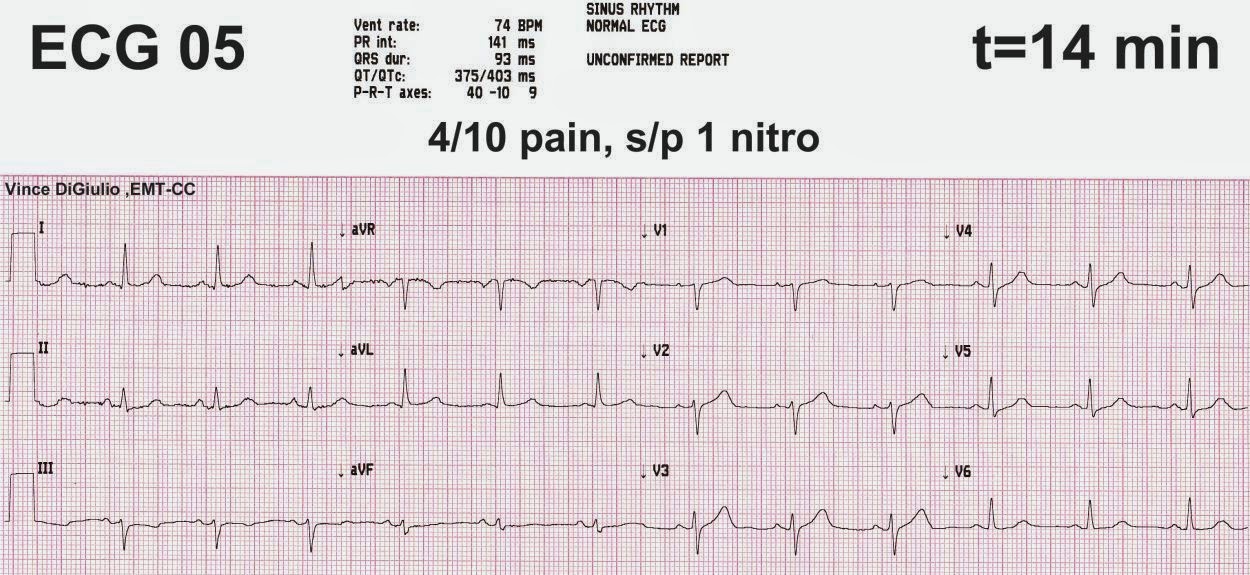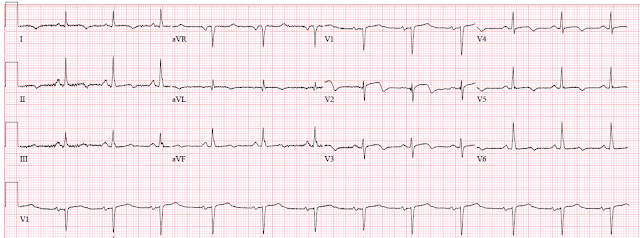

V1 is placed to the right of the sternal border, and V2 is placed at the left of the sternal border. To locate the space for V1 locate the sternal notch ( Angle of Louis) at the second rib and feel down the sternal border until the fourth intercostal space is found.In order to find these correctly, the ‘Angle of Louis’ Method can be used: Note: The following guide uses the AHA system. (Adapted from Crawford and Doherty 2010a Jevon 2010 Cables and Sensors 2016) Precordial Lead Placement Left midaxillary line on the same horizontal plane as V4 and V5 Left anterior axillary line on the same horizontal plane as V4 International Electrotechnical Commission (IEC) system.īoth systems are described in the table below.įourth intercostal space at the right sternal borderįourth intercostal space at the left sternal borderįifth intercostal space in the midclavicular line.American Heart Association (AHA) system.There are two coding systems currently in use:
#Serial ecgs code#
There are different methods for identifying the correct landmarks for ECG electrode placement, the two most common being the ‘Angle of Louis’ Method and the ‘Clavicular’ Method (Crawford & Doherty 2010a).ĮCG electrodes are colour-coded, and each is identified by a specific code that refers to its intended placement. The patient’s chest and all four limbs should be exposed in order to apply the ECG electrodes correctly. by closing the room door or drawing around the curtains. Ensure the patient’s privacy and dignity: e.g. This will prevent muscular tension or movements from producing artefact on the ECG recording. Ensure the environment is at a comfortably warm temperature (Jevon 2010). If this is not possible or is uncomfortable for the patient, it is acceptable to record the ECG in another position. Where possible, place the patient in a supine or semi-recumbent position with their legs and arms uncrossed (QAS 2020). Patients with chest hair should have hair at the electrode placement sites removed with a hair clipper (Coviello 2016). Care should be taken not to cause abrasions.
#Serial ecgs skin#
Some ECG machines may also provide a ‘rough patch’ either separately or on the electrodes, which can be used to rub on the skin to increase electrode adherence. If the skin is oily or the patient applied any creams or lotions, use an alcohol wipe to clean each electrode placement site. If the patient’s skin is dirty, clean with soap and water, and then dry.


Maintain good infection control practice by washing your hands prior to patient contact. Preparing a Patient for an ECGĪs with all procedures, you must obtain informed consent from the patient by explaining the purpose of the procedure, describing the procedure itself and obtaining consent to proceed. It is therefore important to not only ensure that the electrodes are placed in accordance with the standardised ‘rules’, but also, that the patient is prepared correctly for the procedure, both physically and psychologically. Patient factors such as respiration, position, smoking, recent dietary intake and obesity may also contribute to the accuracy of an ECG reading (McCann et al. Deviation of lead placement even by 20-25mm from the correct position can create clinically significant changes on the ECG, including changes to the ST-segment (McCann et al. Poor electrode placement can result in mistaken interpretation, which may then lead to possible misdiagnosis, patient mismanagement or inappropriate procedures (Khunti 2013). It is important an ECG is recorded accurately.ĮCG electrode placement is standardised, allowing for the recording of an accurate trace - but also ensuring comparability between records taken at different times.


 0 kommentar(er)
0 kommentar(er)
